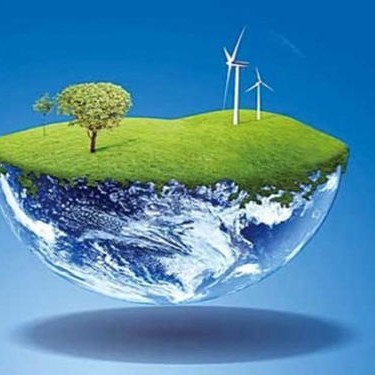
-
 Afrikaans
Afrikaans -
 Albanian
Albanian -
 Amharic
Amharic -
 Arabic
Arabic -
 Armenian
Armenian -
 Azerbaijani
Azerbaijani -
 Basque
Basque -
 Belarusian
Belarusian -
 Bengali
Bengali -
 Bosnian
Bosnian -
 Bulgarian
Bulgarian -
 Catalan
Catalan -
 Cebuano
Cebuano -
 China
China -
 China (Taiwan)
China (Taiwan) -
 Corsican
Corsican -
 Croatian
Croatian -
 Czech
Czech -
 Danish
Danish -
 Dutch
Dutch -
 English
English -
 Esperanto
Esperanto -
 Estonian
Estonian -
 Finnish
Finnish -
 French
French -
 Frisian
Frisian -
 Galician
Galician -
 Georgian
Georgian -
 German
German -
 Greek
Greek -
 Gujarati
Gujarati -
 Haitian Creole
Haitian Creole -
 hausa
hausa -
 hawaiian
hawaiian -
 Hebrew
Hebrew -
 Hindi
Hindi -
 Miao
Miao -
 Hungarian
Hungarian -
 Icelandic
Icelandic -
 igbo
igbo -
 Indonesian
Indonesian -
 irish
irish -
 Italian
Italian -
 Japanese
Japanese -
 Javanese
Javanese -
 Kannada
Kannada -
 kazakh
kazakh -
 Khmer
Khmer -
 Rwandese
Rwandese -
 Korean
Korean -
 Kurdish
Kurdish -
 Kyrgyz
Kyrgyz -
 Lao
Lao -
 Latin
Latin -
 Latvian
Latvian -
 Lithuanian
Lithuanian -
 Luxembourgish
Luxembourgish -
 Macedonian
Macedonian -
 Malgashi
Malgashi -
 Malay
Malay -
 Malayalam
Malayalam -
 Maltese
Maltese -
 Maori
Maori -
 Marathi
Marathi -
 Mongolian
Mongolian -
 Myanmar
Myanmar -
 Nepali
Nepali -
 Norwegian
Norwegian -
 Norwegian
Norwegian -
 Occitan
Occitan -
 Pashto
Pashto -
 Persian
Persian -
 Polish
Polish -
 Portuguese
Portuguese -
 Punjabi
Punjabi -
 Romanian
Romanian -
 Russian
Russian -
 Samoan
Samoan -
 Scottish Gaelic
Scottish Gaelic -
 Serbian
Serbian -
 Sesotho
Sesotho -
 Shona
Shona -
 Sindhi
Sindhi -
 Sinhala
Sinhala -
 Slovak
Slovak -
 Slovenian
Slovenian -
 Somali
Somali -
 Spanish
Spanish -
 Sundanese
Sundanese -
 Swahili
Swahili -
 Swedish
Swedish -
 Tagalog
Tagalog -
 Tajik
Tajik -
 Tamil
Tamil -
 Tatar
Tatar -
 Telugu
Telugu -
 Thai
Thai -
 Turkish
Turkish -
 Turkmen
Turkmen -
 Ukrainian
Ukrainian -
 Urdu
Urdu -
 Uighur
Uighur -
 Uzbek
Uzbek -
 Vietnamese
Vietnamese -
 Welsh
Welsh -
 Bantu
Bantu -
 Yiddish
Yiddish -
 Yoruba
Yoruba -
 Zulu
Zulu
fiberglass dual lamination
The Innovation of Fiberglass Dual Lamination
Fiberglass dual lamination has emerged as a transformative technology in various industries, particularly in construction, automotive, and marine applications. This advanced process not only enhances the durability and strength of fiberglass products but also expands their potential uses in both commercial and residential settings.
At its core, fiberglass dual lamination involves layering fiberglass cloth with a resin system that cures to form a robust, lightweight composite material. This technique combines the benefits of fiberglass with the protective qualities of added laminates, resulting in a composite structure that resists moisture, chemicals, and environmental wear. The process entails applying two layers of fiberglass, often woven or chopped strands, saturated in a resin that bonds the layers together, creating a seamless and strong finish.
One of the standout features of fiberglass dual lamination is its exceptional strength-to-weight ratio. This characteristic is particularly critical in the automotive and aerospace industries, where reducing weight can lead to improved fuel efficiency and performance. Automotive manufacturers are increasingly turning to dual laminated fiberglass components for vehicle body panels and internal structures, as they offer a great combination of rigidity and reduced mass.
fiberglass dual lamination

In the marine world, fiberglass dual lamination is highly prized for its ability to withstand the harsh marine environment
. Boats and yachts constructed using this technique demonstrate greater resistance to corrosion, delamination, and osmosis when exposed to seawater. As a result, manufacturers and boat builders prefer these advanced techniques to ensure longevity and reliability in their vessels, providing users with a safer and more enduring experience on the water.Additionally, the construction industry has benefited significantly from fiberglass dual lamination. Building components such as roofing systems, decorative facades, and structural supports that utilize this technology demonstrate not only enhanced durability but also improved aesthetic possibilities. The versatility of fiberglass allows for various finishes and colors, enabling architects and designers to create visually appealing structures without compromising strength.
Moreover, environmental considerations have prompted manufacturers to adopt more sustainable practices. With advancements in resin formulations, many companies are now utilizing bio-based resins, reducing the overall carbon footprint of fiberglass dual lamination products. This innovation aligns with global efforts to promote sustainability within manufacturing processes and serves as a testament to the industry’s commitment to a greener future.
In conclusion, fiberglass dual lamination represents a significant step forward in composite material technology. Its combination of lightweight strength, resistance to environmental factors, and aesthetic versatility has made it a preferred choice across multiple sectors. As industries continue to innovate and evolve, the applications and benefits of fiberglass dual lamination are likely to expand, paving the way for new and exciting developments in material science and engineering.









